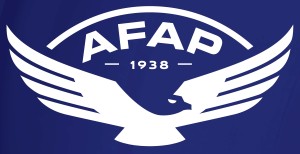Takes awhile for this concept to sink in. Bit like HAL the computer. Not sure how the pilot will spend his "strategic thinking " time? perhaps suduko? or catch up on some in flight rest after 18hrs of duty?
Watch: Robotic Copilot Demonstrated By Aurora Flight Sciences
Aurora Flight Sciences is flying a Cessna Caravan fitted with a robotic copilot as it completes work under Phase 2 of a Darpa program to demonstrate automation that could reduce the crew required to fly existing aircraft.
Under Darpa’s Alias (Aircrew Labor In-cockpit Automation System) program, Aurora has also demonstrated its technical approach on a Diamond DA42 piston twin and is installing the system in a Bell UH-1 helicopter.
Aurora and competing Alias contractor Sikorsky have submitted bids for Phase 3 of the program, which will mature technology developed and demonstrated under Phases 1 and 2, says Dan Patt, Darpa program manager.
“Alias is focused on cockpit automation to enable operation of current aircraft with fewer crew, and not on a new aircraft designed for reduced-crew operation,” he says.
Citing shortages of trained military pilots, Patt says “Making each human operator more effective [through robust automation] would be a really large payoff for the Defense Department.”
Alias is not about eliminating the human, but managing all the basic procedures on an aircraft so the pilot is not in the cockpit to flip switches but for their longer-term strategic thinking, he says.
“Pilots can use their time more productively,” Patt says. On an intelligence, surveillance and reconnaissance mission, Alias would “allow the human to think about the context of the mission and the information being collected versus managing the stick and throttle.”
Aurora’s approach involves a perception system in the cockpit that uses multiple cameras to read the gauges and monitor the switches, and feeds the data into real-time computer model of the aircraft’s state. This then allows the cockpit-mounted system to fly the aircraft via actuators that move the control column and rudder pedals and the multi-axis robot arm that moves the throttle.
The system has been installed in place of the right seat in the otherwise-unmodified Caravan for flights that comprise the graduate exercise of Phase 2 of the Alias program. The system is controlled by the pilot in the left seat using a tablet mounted on the glareshield.
Aurora flight tested an earlier version of its Alias in its Centaur optionally piloted version of the DA42. Installing the system in an aircraft from another manufacturer, the Caravan, demonstrated the Alias goal of making the system portable between existing types.
The system has also been installed in both a DA42 and a Caravan being used on the ground as hardware-in-the-loop simulators (Hilsim) for ALIAS. The UH-1 is being modified into a third Hilsim to demonstrate extensibility to another type from another manufacturer.
For Phase 3 of the program, Aurora has proposed maturing the camera-based perception system along with speech recognition technology that will allow the pilot to interact with the automation in the same way they would with a human copilot.
Aurora sees the near-term potential for the perception system to reduce pilot workload and increase safety by assisting the pilot with checklists, particularly in emergencies, and by monitoring analog gauges or digital displays and alerting the pilot to anomalies.

In a demo witnessed by Aviation Week at Aurora’s Manassas, Virginia, headquarters on Oct. 17, the perception system monitored first a chip detection light illuminating then oil pressure falling, and Alias alerted the pilot to a possible engine failure via the cockpit-mounted tablet.
Alias then guided the pilot though an engine-failure checklist in which emergency functions were assigned to either the pilot or the automation, with the perception system monitoring the gauges and switches to verify the correct actions had been taken in the right sequence.
“We can enhance safety today, without removing anybody from the cockpit,” says Aurora CEO John Langford. “And we can go into aircraft not set up to have electronic controls.”
